About Me and The Caricature Course
Hello! I’m Court Jones. And welcome to the first video in my course on thev [Art of Caricature. This series will be divided into two main sections. The first part will cover caricature fundamentals, for those of you new to the artform or even for experienced caricaturists looking to improve their core skills. The second part will be filled with intermediate and advanced level exercises that are designed to help improve your exaggeration abilities and give you more creative ways to solve caricature problems.
As with all the other Proko courses, there will be plenty of free lessons. But we’ll also have a premium course with lots of additional demonstrations and longer versions of the free videos. We’ll go more in depth on each lesson in the Caricature Course.
To give you a better idea about me, I’ve been doing caricatures professionally since 1996. I’ve taught caricature to people in theme parks, private workshops around the world and I was an instructor at the Watts Atelier for many years. I started my career by doing live quicksketch. Then I moved into commercial illustration, where I applied my traditional training to drawing and painting caricatures.
What is Caricature?
Most of us generally know what a caricature is when we see it. But there are a lot of misunderstandings about how to define it. Most non-artists usually say something like “It’s a portrait where they make you look ugly.” Or “The artist just takes your worst feature and makes it bigger.” ...Statements like that make my head want to explode.
The goal of caricature is not to make someone ugly. It’s not even about making fun of them (although it can be). And there’s a lot more to it than just making one feature bigger.
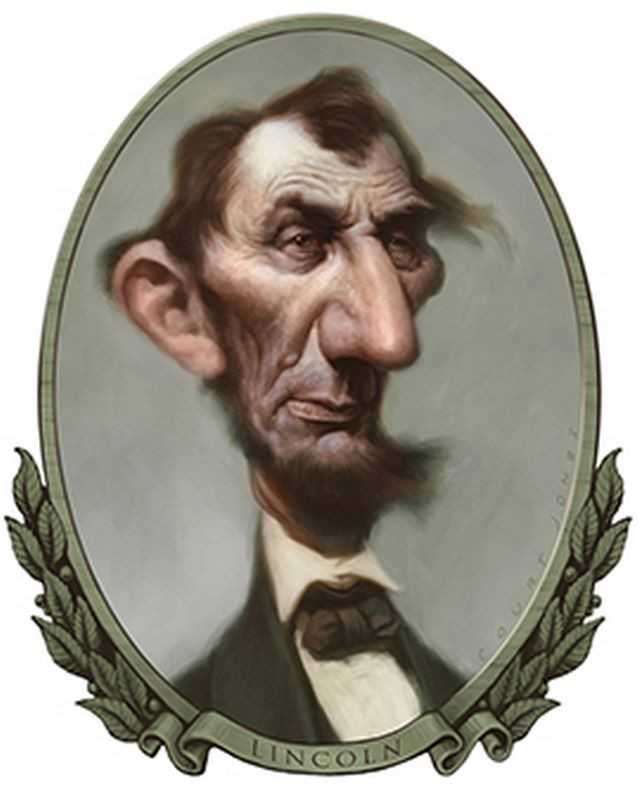
"A Caricature, at its core, is a portrait where the proportions are changed to highlight what makes a person different from everyone else."
Court Jones
Hopefully, the result is funny. And ideally, a caricature will look more like the person than they look like themselves. But how is that even possible?

On a traditional portrait, if you change the proportions incorrectly, without intention, you’ll lose the likeness.
But when it’s done correctly and intentionally in a caricature, the likeness will be even stronger than the photo. Well, the mechanism which makes that possible is called “exaggeration.”
What is Exaggeration?
Think about how you’re able to recognize a face. The science of facial recognition is complex and there’s a lot going on in the brain that I’m not qualified to discuss. But when you see someone you know, one of the things your brain does is compare his face to every other person you’ve ever seen. Even though the differences between faces are relatively small and can be measured in millimeters, when you put those differences all together on one face, they add up to a totally unique looking person.
Facial Recognition occurs when our brains notice those traits which differ from the average.In this photo of Gene Wilder, one of the traits that’s distinctive about him is his large, downward-pointed nose.
When we see that feature made even larger and pointed [in a caricature], it’s an instant cue to our memory of what stands out about Gene Wilder.
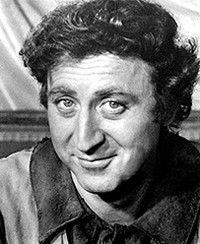
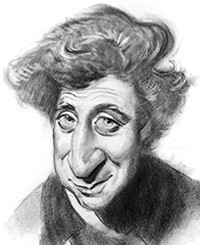
So when we exaggerate distinctive features in a caricature, we’re making those tiny differences in a face more obvious and bringing attention to them, triggering the brain’s memory more quickly. “Exaggeration” is just the act of exploiting the brain’s natural ability to recognize one person from another.
To illustrate this concept in the simplest terms, think of a perfect square. A square is a visual representation of the average of all rectangles that have ever existed. This perfect square will be “rectangle A” for “average”.
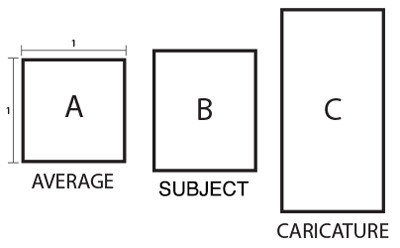
So in order to caricature it, I am going to exaggerate how it differs from the square. “Rectangle C” with its stretched proportions, is a caricature of “rectangle B.” The traits that made “rectangle B” different from the average are now even more obvious.
Faces have a lot more going on in them than simple rectangles. So let’s look at some faces with obvious deviations from the average. We saw earlier how Gene Wilder’s nose seems larger than average. So in his caricature, his nose becomes even larger.
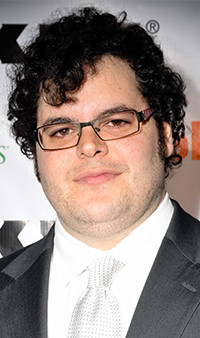
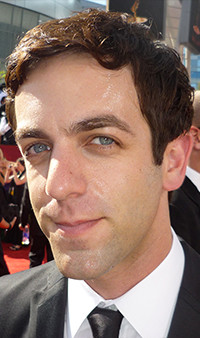
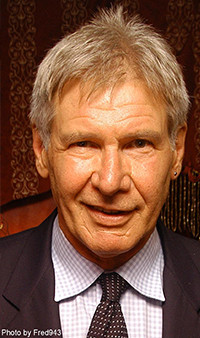
Josh Gad’s nose, on the other hand, is shorter than the average, so in his caricature, his nose becomes likewise smaller. B.J. Novak’s eyes are slanted more downward more than the average. So that trait appears more extreme in his caricature. And Harrison Ford’s nose and mouth are more crooked than the average. So his caricature features an even more crooked nose and mouth. I’m pointing out only one feature from each of these actors’ faces. But a good caricature takes into account all of deviations from the average and reshapes all of the proportions.
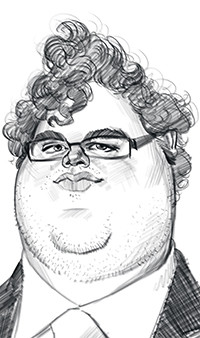
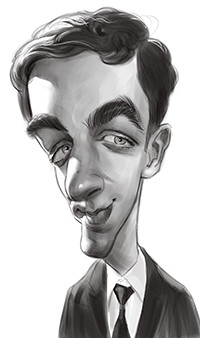
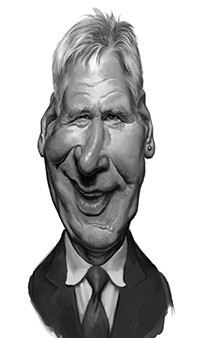
You may have figured out by now, that this means in order to understand how to caricature, you first need to be really familiar with the average head.
Here’s my diagram showing the proportions of the average adult male Caucasian head. You can find diagrams like these in art instruction books. My favorites are those by Andrew Loomis.
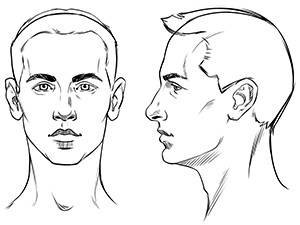
Of course, if you’re not from an area of the world that is dominated by those with Western European features, the average diagram will be a little different for you. But for the sake of having a common starting point, for the average face, we’re going to refer mostly to the adult male Caucasian head.
If you’re not comfortable using the Caucasian facial type as a basis of comparison, that’s totally fine. Make your own average diagram that represents the faces you’re normally around where you live. The overall proportions are going to be the same as this diagram. But details like the eyes, nose and lips may be different.
What’s Next?
In the next video, I will show how to apply these basic principles of exaggeration with step by step demonstrations to create original thumbnail concept sketches for the caricature. After that, I’ll show you how I develop and refine the caricature using traditional portrait drawing techniques.Later in this series, we’ll learn lots of practical exercises for improving your exaggeration skills, and ways to take your caricatures to a high level of finish.
Premium Section
If you’d like to see me analyze some celebrity faces and how they deviate from the norm while doing quick sketches of them, check out the Premium Course. Also, you’ll get a downloadable diagram of the average head, a video on the history of caricature, a longer version of THIS lesson and a fully narrated demonstration of me drawing the Gene Wilder caricature shown in this video. There’s lots of extra goodies for Premium students.
*Photo Credits: Josh Gad by The Bui Brothers, BJ Novak by Greg Hernandez, Harrison Ford by Fred943
Assignment
My suggestion for you to prepare for the next lesson is to familiarize yourself with the standard adult male head and create your own diagram including the appropriate marks showing the proportions and divisions.







